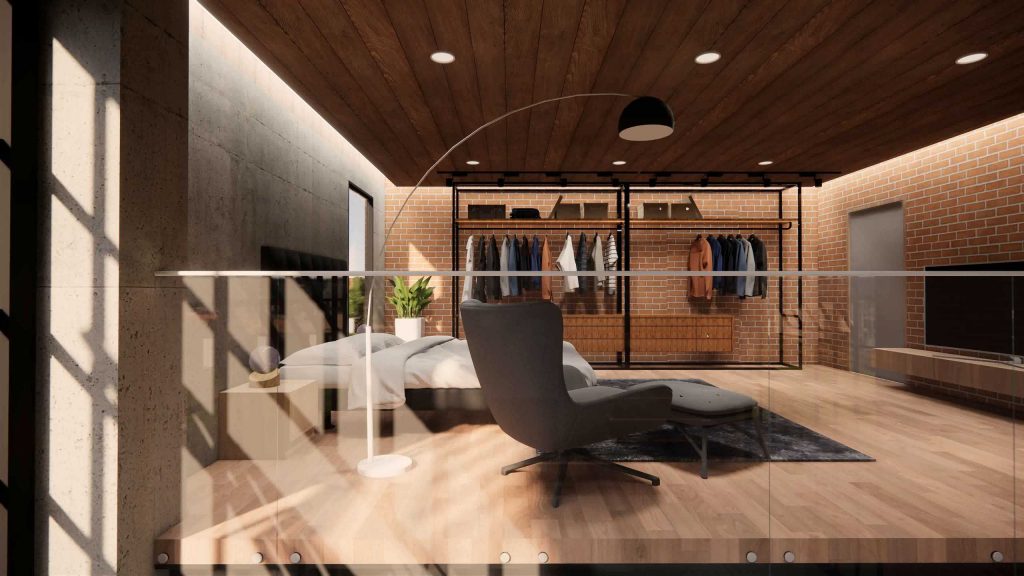When people think about redesigning their home, they often focus on furniture or wall colors. But there’s one element that has a direct and immediate effect on your body, mind, and mood — light.
Light can help you concentrate or make you sleepy. It can give energy or invite stillness. And in a home that serves both work and rest, it’s one of the most powerful tools you have.
Let’s explore how light can be used to shape zones, enhance productivity, and create calm — all in the same space.
1. The Psychology and Physiology of Light
Light doesn’t just brighten a room. It communicates with your brain. It regulates your circadian rhythm — the internal clock that tells you when to wake, when to eat, when to rest.
Natural daylight increases alertness, supports focus, and improves mood.
Warm, dim light lowers stress hormones and prepares the body for rest.
This means the type, temperature, and placement of lighting in your home can either support — or sabotage — your daily flow.
2. Morning to Night: Let Light Match Your Rhythm
Morning / Work Hours:
- Use cool white or natural daylight bulbs (5000–6500K)
- Position your workspace near a window if possible
- Avoid harsh shadows — use side lighting to soften contrast
- Task lights (like desk lamps) keep your focus anchored
Evening / Wind-Down Time:
- Shift to warm lighting (2700–3000K)
- Use floor or table lamps instead of ceiling lights
- Avoid blue light — especially from screens
- Introduce amber-toned lights in rest zones
This lighting cycle mimics the natural rise and fall of daylight — helping your body transition smoothly through the day.
3. Light Zoning: How to Use Lighting to Define Space
Zoning isn’t just about furniture placement. Lighting can serve as a silent, elegant divider between different functions — even within the same room.
Try this:
- Bright overhead + focused task light for your work area
- Soft diffused lighting in your reading or lounge zone
- A floor lamp with adjustable head to create a “creative corner”
- Pendant lights over dining zones to ground the space
You don’t need separate rooms to create distinction — you just need light that “speaks” the right language in each zone.
4. Design with Shadows, Too
Design isn’t only about illumination. It’s also about control of shadows and contrast.
Harsh direct light can make a space feel tense and clinical.
A mixture of ambient, accent, and task lighting creates depth and warmth.
Here’s a quick trio to try:
- Ambient: soft general lighting (e.g. ceiling or wall-mounted)
- Task: directional light for focused work
- Accent: decorative light to highlight artwork or soften corners
When used together, they build mood, structure, and subtle boundaries — all without moving a single piece of furniture.
5. Common Mistakes (and Simple Fixes)
Mistake 1: Using one light source for everything
→ Fix: Layer different lights and temperatures for time of day
Mistake 2: Too much overhead lighting
→ Fix: Add lamps at eye level for softer, more intimate glow
Mistake 3: Blue light overload in the evening
→ Fix: Use amber bulbs or smart lights with night mode
Mistake 4: Forgetting natural light control
→ Fix: Use light curtains during the day, blackout options at night
Your lighting setup should adapt — not stay static. Just like your day.
6. Tools You Can Start Using Today
You don’t need to buy an expensive lighting system to make improvements. Start with:
- A smart light bulb with adjustable temperature
- A clip-on task lamp for your desk
- A plug-in dimmer switch
- A portable lantern for ambient evening light
- LED strip lights to frame a zone without major installation
Small lighting changes can completely shift how you experience your space — and how you move through your day.
What You’ll Learn in the Course
Inside Work-Life Home Design, you’ll get:
- A full breakdown of light types and temperatures
- Real examples of how to layer lighting in small spaces
- Room-by-room lighting guides for hybrid homes
- Tips for enhancing focus and supporting rest using light
You’ll see how light can become more than a background element — it becomes part of your wellness toolkit.
Light Isn’t Just Brightness. It’s Atmosphere.
In the right light, everything changes.
Your energy. Your comfort. Your productivity. Your peace.
A well-designed home is not about perfection. It’s about responsiveness — and light is the most responsive design tool you have.
Use it with intention, and your home will feel entirely different — even if nothing else changes.

